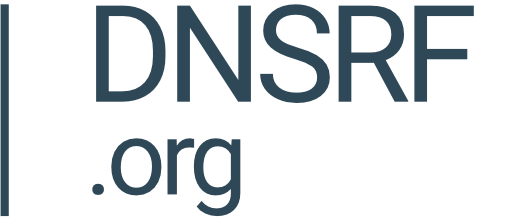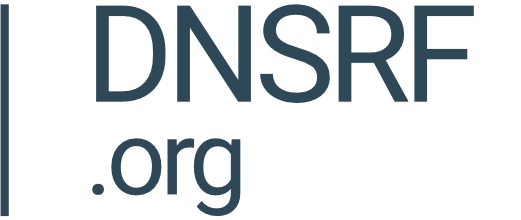Immediate Update from IETF 119

By Mark McFadden
They say that good things come to those who wait. It’s been 24 years since the IETF met in-person in Australia and attendees were treated to warm weather and amazing hospitality. Attendees who flew to Brisbane from the northern hemisphere got an odd treat. On the Tuesday of IETF week it was the Vernal Equinox marking the change from Summer to Fall in the Southern Hemisphere and Winter to Spring in the Northern Hemisphere. Those who travelled across the equator to get here and the travelled back across it on the way home, were in all 4 seasons in a week (Winter->Summer->Fall->Spring!).
Here’s ten sessions or presentations that were particularly engaging during IETF 119 in Brisbane.
Geoff Huston’s Statistics Presentation in RASPRG.
Not long ago, the IRTF set up a Research Group devoted to metrics associated with the standards process itself. Instead of studying the networks on which the Internet is built, Research and Analysis of Standard-Setting Processes Proposed Research Group (rasprg, for short) is devoted primarily to studying the standard process. During its meeting at IETF 119, Geoff Huston, Internet researcher extraordinaire, presented what might have been the most remarkable piece of research seen at IETF 119. Called “Making a RFC in Today’s IETF,” Geoff’s work studied three interesting topics:
- How long does it take to produce an RFC?
- Is it taking longer than before?
- What is the success rate for Internet-Drafts?
Is it true that good things come to those who wait?
The work is filled with interesting tidbits including Internet-Drafts that are more than 22 years old, but still not published, the number of Internet-Drafts published per week is (and, has been) pretty stable, and the draft to RFC “conversion rate” is around 20%. The most fascinating part of the work was Geoff’s look at how long it takes to produce an RFC. I won’t spoil the surprise - the presentation is a must-watch - but it seems to be easier and quicker to raise children than to publish an RFC. This was one of the highlights of IETF 119. A video recording of the entire RASPRG session is here.
The SCONE video BoF
What is the media that dominates the Internet? By a considerable margin, it’s video. All major social networks, CDNs, and video-sharing services work tirelessly to maximize the user experience while being frugal about the network resources needed to deliver the video. The Secure Communication of Network Properties (sconepro) BoF was a session devoted to using new tools to improve user and networks experience in the context of video.
Meta led with a presentation on an experiment they have conducted that puts a MASQUE proxy in between a user and a CDN providing video. The proxy is responsible for communicating the bit rates that the client can successfully consume. In Meta’s case, they took a specially designed Facebook app, connected it to the proxy and then used the connection to serve up a playlist of videos. In nearly every case, the negotiated connection improved the quality of experience for the end-user.
Near the end of the session, a poll indicated that (on an indicative poll of 51 to 20) that the work was interesting enough to form a working group. You can watch a video of the entire BoF here.
IETF Finances during the Plenary
Standards Development Organizations are under terrific pressure to continue to expand their work while finding sustainable ways to fund their activity. In the IETF’s case, they have long had extraordinary support from the Internet Society. Even so, the cost of participation at the IETF has grown significantly over recent years. Some have called for the Internet Society to increase its funding for the IETF and make the standards organization more accessible (at least from an economic perspective!).
Alas, that appears not to be possible. During the IETF 119 Plenary, Jason Livingood (the IETF LLC Board Chair) and Andrew Sullivan (the Executive Director of the Internet Society) presented a report that showed limits to which ISOC could support the IETF. The limits are complicated, but essentially they involve the extent to which ISOC must abide by a “public support test” under tax laws in the United States.
Still, ISOC’s contribution is considerable. It has promised contributions of more than 76 million US Dollars in eleven years. In 2024, IETF’s revenues are made up of:
- $7,020,000 from the Internet Society;
- $1,992,375 from registrations for IETF meetings;
- $1,635,000 from other sponsors; and,
- $1,000,000 in other donations.
The key takeaway is that the IETF needs to find other, more sustainable sources of funding to continue its work as currently organized. You can watch a video of the entire IETF 119 Plenary here.
DNSOP
DNSOP (DNS Operations) is always one of the more interesting working groups. It straddles topics related to the DNS in the context of both protocol design and operations. That makes it one of the most busy of Working Groups in the IETF with sessions that always stretch across multiple sessions and a workload that requires three, instead of the usual two, working group chairs. As of IETF 119, DNSOP had 15 separate documents under consideration.
At IETF 119, there was the usual set of suggestions for evolutionary improvements to the DNS protocols themselves, some revisions of standards that are already in place, and even some suggestions for doing better measurements of how the DNS works in the wild.
Perhaps the most important item on the DNSOP agenda - and, a real reason to pay close attention - was an update on the results of the earlier BoF on DELEG. We covered the basics of DELEG in a previous posting but IETF 119 was an opportunity to see if the work at the interim meeting would morph into a full-blown working group.
DELEG has been called “the most significant change to the DNS since DNSSEC.”
There seems to be quite a bit of interest in the problem space, but there is no agreement about what the solution space would look like. The result of this week is new work on the charter of a new working group that does a good job of identifying the delegation while leaving open what the engineering solutions might be. This is likely to be a very active working group once it is approved by the IESG. There is a brand new mailing list for DELEG at [email protected] - the DNSOP session video is available on the IETF website and the video for the DELEG session is here.
The Sudden Importance of Standards for Supply Chains
A remarkable development at the IETF (as well as at other standards organizations) is the sudden emergence of work on standards for supply chains. At IETF 119, Supply Chain Integrity, Transparency, and Trust (scitt) continued its work on supply chains for software. This working group aims to define a set of interoperable building blocks that will allow implementers to build integrity and accountability into software supply chain systems to help ensure trustworthy operations. At IETF 119, SCITT continued to work on an architecture for software supply chains, a set of reference APIs, and a description of SCITT use cases.
Supply chain management is also in the charter of Workload Identity in Multi System Environments (wimse). At IETF 119, there was a discussion of transaction tokens, a way to preserve identity and trust across administrative boundaries - a key feature of supply chain management. In addition to the ongoing work in WIMSE, there as a BoF on the topic of Secure Patterns for Internet CrEdentials (spice). This BoF had a wide-ranging discussion on the overlap of work in the IETF and similar work going on at the World Wide Web Consortium (W3C). The work on Verifiable Credentials was a particular emphasis, with the IETF taking its “inspiration” for SPICE work from the work already underway at the W3C. You can see a video recording of the SPICE BoF here.
The All Dispatch experiment
For any standards organization, a critical element is: how does new work get into the standardization path? It’s very much different for every SDO. In the case of the IETF, when new work doesn’t fit into the charter of an existing working group, there are two paths for new standardization work:
- The Birds of a Feather approach to starting a new Working Group; and,
- Dispatch, which allows an individual author to get guidance on where to take their work.
Historically, the Dispatch process has been associated with individual Areas within the IETF. However, sometimes, an author comes to the wrong area, or the topic crosses areas and needs consultation from multiple expert communities. At IETF 119, the week began with a single session devoted to dispatching all the individual candidate documents that had arrived since IETF 118. ALLDISPATCH is an IESG experiment to provide guidance across all IETF Areas of work. Nine separate documents were considered during ALLDISPATCH, and each was given advice on how the authors should proceed in the IETF.
The experiment was judged to be a qualified success, and it is likely to be repeated - in a slightly different form at IETF 120. One significant problem was that authors believed they had to explain their entire area of study. At the same time, many participants felt that the presentation should only provide what was needed to decide the dispatch question. You can see a video of the ALLDISPATCH session https://www.youtube.com/watch?v=bPNRO2HYITg.
IABOpen
The Internet Architecture Board (IAB) is intended to be a forward-looking resource to consider long-term improvements, issues and emerging technologies for the Internet. It has many administrative responsibilities in the IETF ecosystem. Usually, the IAB commits one hour during the week of in-person IETF meetings to update the community on recent work at the IAB. Usually, those sessions provide no opportunity for the community to interact with the IAB and, usually, the sessions are mind-numbing and dreary.
The outgoing and incoming chairs of the IAB broke that mold at IETF 119.
The IABOpen session started with a review of the relationship between the 3GPP and the IETF. Why the IAB doesn’t follow this up with a session on the relationship between the IETF and other standards organizations is a mystery, but this was a helpful start.
After that, Stuart Cheshire from Apple gave a presentation on Thread, the low-power communications and transport protocol for small devices. Stuart’s presentation is an excellent introduction to how Thread fits into the IoT ecosystem and how IPv6 can be used by devices restricted in power and bandwidth.
As excellent as those first two presentations were, the most remarkable talk was by Vanessa Teague, from the Australian National University in Melbourne. Australia is among those nations that want to protect its citizens from encountering illegal material online. If all communications are encrypted, how is this possible? Well, there is the technology of “perceptual hashing.” The idea behind “perceptual hashing” is that similar pictures have similar hashes.
Suppose an organization has a set of hashes of images that are illegal. In that case, someone, or an organization, can compare an image in transit to the hashes in the database and decide whether the image is prohibited. Ms. Teague provided an incredible story about how such a system probably cannot work. Her talk - in fact, all the talks in IABOpen - is highly recommended. You can see the session video here.
The IETF Executive Director Presentation to Working Group chairs
A session is nearly always set aside for Working Group chairs only at each IETF meeting. IETF 119 was no different.
Usually, the content is very specific to the skills and processes a Working Group chair encounters in navigating a Working Group toward practical and deployable standards. At IETF 119, the agenda included a presentation from the IETF’s Executive Director on the recently completed IETF Community Survey.
There were a considerable number of eye-opening conclusions in the Community Survey. The fastest-growing region, in terms of participation, is Europe. The IETF continues to have a severe problem with gender diversity, and even after years of trying, the IETF continues to have a problem with the behaviour of its participants. More than 70% of participants identify themselves as “employees”, and almost 65% are from businesses rather than academia (21%) or civil society (14%). Finally, participants in the IETF think that the IETF is good at delivering its mission and principles but could do much better.
The complete IETF Community Survey is a surprising and revealing picture of the people participating in the IETF. It’s definitely worth a read for those interested in the differences between the various Standards Development Organizations. While there’s no video available of the presentation, the slide deck is available https://datatracker.ietf.org/meeting/119/materials/slides-119-eodir-sessb-draft-report-on-ietf-community-survey.
Visibility of the IRTF
The Internet Research Task Force (IRTF) is an important but often misunderstood part of the IETF ecosystem. One of the significant developments in recent years is that the current Chair of the IRTF has worked to make the organization more visible during in-person IETF meetings. That’s a helpful development, and at IETF 119, the following nine research groups met in person:
- Crypto Forum
- Measurement and Analysis for Protocols
- Global Access to the Internet for All
- Information-Centric Networking
- Quantum Internet Research Group
- Research and Analysis of Standards-Setting Processes Proposed Research Group
- Internet Congestion Control
- Decentralization of the Internet Research Group
- Network Management Research Group
That’s a significant development because the research that underpins the IETF’s protocol work is more accessible and visible. In the not-too-distant past, it was common for only one or two research groups to meet during an in-person IETF meeting. This is a welcome change, and many in the community hope it will continue.
Standards Observatory at the IETF
Finally, a shoutout and shameless plug for my colleague Carolina Caeiro’s presentation on the Internet Standards Tracker (part of the Internet Standards Observatory). All of the presentations at this meeting’s RASPRG were interesting (see my note about Geoff Huston’s above), but it’s a tribute to the re-energizing of the IRTF, that some of the presentations in research groups are must watch video.
Carolina explained what the Standards Observatory is and then showed the Standards Tracker itself. Most importantly, she also showed the back-end of the application which is the ending that makes it work. The dictionaries feature is especially promising because it is the feature that allows the tracker to keep up with emerging technology. My evolving the vocabulary that the tracker uses, the application can respond to changes in technologies and even new approaches to standardization.
The video for the entire RASPRG meeting is available here.
What’s Next?
Usually, I would simply say that what’s next is IETF 120 in Vancouver, BC, Canada - July 20-26, later this year. Do good things come to those who wait?
Why wait? The IETF really gets much of its work done between meetings; either on its enormous number of email lists (there are more than 500); or in interim meetings, which became an important part of the IETF’s working methods during the pandemic.



